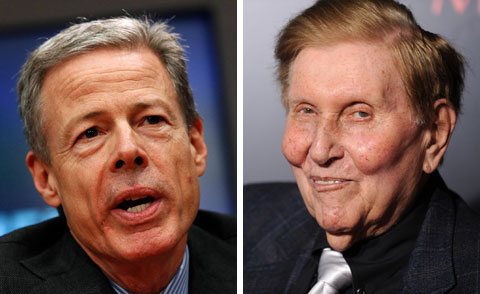Hulu, the online video Web site that has both free and paid services, said Tuesday that it had doubled its number of paying subscribers in the last year, to four million.
The announcement comes at an uncertain time for Hulu, as two of its owners, the Walt Disney Company and News Corporation, weigh whether to sell the company. Last month, the founding chief executive of Hulu, Jason Kilar, stepped down; one of his top lieutenants, Andy Forssell, is now the acting chief executive.
Hulu was not expected to say anything new about its ownership structure at a Tuesday morning event for advertisers in New York. The event, part of the Digital Content NewFronts this week, was set up to promote several original series that will premiere on Hulu this year.
Among the shows that will be distributed exclusively by Hulu are “Quick Draw,’’ a comedic Western set in 1870s Kansas, and “The Awesomes,” an animated series about superheroes from the minds of the “Saturday Night Live” star Seth Meyers and the “Late Night With Jimmy Fallon” producer Michael Shoemaker. They are the third wave of original shows for the service, and the most ambitious to date. The first wave, in 2011, was led by the Morgan Spurlock documentary series “A Day In The Life;” the second, in 2012, included a political sitcom called “Battleground” and a travelogue by Richard Linklater called “Up to Speed.”
That said, Hulu’s most popular shows remain those that it licenses from their owners and from other media companies. Hulu says it has more than 470 such partners and more than 70,000 full television episodes on its free and paid services combined.
Content costs are rising as the online television marketplace becomes more competitive; last week, Yahoo snapped up the exclusive rights to old clips from “Saturday Night Live,” something that Hulu used to feature on its own site.
In this crowded environment, commissioning shows is one way to stand out. Hulu has been in the news this week because it is one of only two places to watch “All My Children” and “One Life to Live,” the canceled ABC soap operas that were resurrected online by a production company, Prospect Park. The other outlet for the shows is Apple’s iTunes store.
Along with “The Awesomes” and “Quick Draw,” Hulu’s other two original series this year are “Behind the Mask,” a documentary series about sports mascots, and “The Wrong Mans,” a drama about two innocent men tied up in a criminal conspiracy. “The Wrong Mans” is a coproduction of the BBC and Hulu.
At the advertiser event on Tuesday, Hulu will also promote a number of shows that have been televised in other countries, but are exclusive to Hulu in the United States. They include an animated series from Canada called “Mother Up!” as well as “Prisoners of War,” an Israeli drama that inspired Showtime’s “Homeland.”
The company will also describe several ideas for original shows that are “brand contingent,” meaning they will be made only if advertisers sign up to support them. One of these ideas involves the chef Mario Batali in conversation with celebrities; another is a performance series to be hosted by Carson Daly.
In addition to announcing that its paid service, Hulu Plus, had topped four million subscribers for the first time, up from two million in the previous year, Hulu said it had reached a new revenue record in the first quarter, but did not specify what that record was. In 2012, according to the company, it earned $695 million in revenue, up from approximately $420 million in 2011.
Article source: http://www.nytimes.com/2013/05/01/business/media/hulu-says-it-has-4-million-paid-subscribers-double-last-years-total.html?partner=rss&emc=rss
